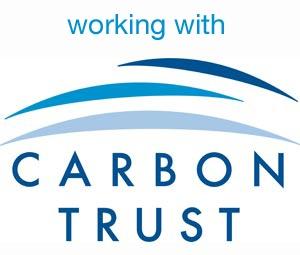TOP TIPS FOR A BETTER EPC RATING.
- Try and make sure as many of your fixed light fittings as possible have energy saving bulbs, i.e. Compact Fluorescent Lamps (CFLs) or Light Emitting Diodes (LEDs).
- If you have a hot water tank, make sure there is plenty of insulation around it. Good insulation can make a significant difference to the rating.
- Loft insulation. If we cannot see the loft is insulated because either we cannot gain loft access or because the loft is boarded over please have any paperwork available to prove loft insulation is fitted.
- If you have cavity wall insulation which is not visible due to rendering etc, make sure you have the paperwork available.
- If your double glazed windows were fitted after 2002 and the date is not visible in the units, please have paperwork available to show the installation date.
- Boiler information: We will try to establish the exact make and model of the gas or oil heating boiler. Where this is possible, the exact efficiency of the boiler can be established. This is likely to be higher than the software default setting for that type of boiler. Establishing the boilers details from visual inspection can be difficult, so please have any information manuals or service history available.
- If your property has had major alterations, extensions or a loft conversion, please show the building control sign off certificate to the assessor on the day of the survey. This documentation will have a major impact in producing a superior EPC.
- Please make sure all parts of the property are unlocked and accessible including basements and loft space.
ENERGY SAVING TIPS FOR YOUR HOME
There are many things you can do around your home to increase energy efficiency and, in effect, reduce your bills.
LIGHTING AND ELECTRICITY.
Look out for the logo. When purchasing new appliances; always look for the ‘Energy Saving Recommended’ logo. Energy Saving Recommended appliances are the most efficient in their category and could save you up to £34 a year. Also visit www.sust-it.net which lists thousands of appliances and how much they cost to run.
Unplug it. If chargers for devices such as mobile phones and mp3 players were unplugged when not in use, the UK could save enough electricity each year to power 115,000 homes. Turning off your mobile phone overnight will mean you have to charge it less.
Turn your lights off. When you leave a room, turn the light off on your way out. It’s said that UK households spend £1.9bn on electricity every year for lighting. Using fluorescent strip lights in kitchens give long lasting bright light with lower running costs.
NIGHT TIME LIGHT.
If you have an outside light, replace the bulb with a low energy light bulb. You can also fit a timer or a motion sensor so it’s only used when it’s needed. You can also buy solar garden lights for night time lighting.
ENERGY SAVING LIGHT BULBS.
In most homes, lighting accounts for 10–15% of the electricity bill. Energy saving light bulbs last up to 10 times longer than normal light bulbs, and each bulb fitted could save around £40 over its lifetime. They come in a range of styles, and often your energy supplier will provide you with some for free.
DOING THE LAUNDRY.
Wash cooler 85% of the energy that washing machines use goes to heating the water, so switch to a cooler wash. Washing at 30°C uses a third less electricity. Modern washing powders are designed to now be more effective at lower temperatures.
Fill it up Put full loads in your washing machine and wait until your dishwasher is full before turning it on. De-scaling these appliances will also help them run more efficiently.
Dry your clothes outside this way you’ll save energy normally used by your tumble dryer. In the winter, put your clothes on a clothes horse rather than on the radiator, as covering the radiator will make your boiler work harder than it needs to.
IN THE BATHROOM.
Take a shower. A five-minute shower uses about a third of the water of a bath and can save 50 litres every time. If you like a bath however, afterwards you can use the water to water your garden.
Fix the drip. Dripping hot taps can add to your heating costs. Get them repaired before it all adds up.
IN THE KITCHEN.
Cooking tips. Chop vegetables into smaller chunks for cooking, they cook more quickly thus using less energy. Put lids on your saucepans to stop the heat escaping and reduce cooking time. Cooking with a steamer means you can cook several types of vegetable on only one ring. Always use the correct size ring for the size of pan you are using. Smaller items are better cooked under the grill than in the oven.
Microwave more. Using a microwave is quicker and more energy efficient than using an oven. Use microwave to warm food up. Making toast in a toaster is more efficient than putting it under the grill.
The perfect cuppa! When boiling the kettle, only use as much water as you need. Boiling too much uses more energy and wastes water if you refill the kettle each time you use it. Most modern kettles have a gauge so you can work out the exact right amount. Also try and de-scale your kettle regularly – lime scale.
Keep it closed. Try not to leave your fridge door open. Each minute the door is open takes three minutes of energy to cool down again. Try to keep your fridge and freezer three quarters full and defrost them regularly. You can put bottles of water in your fridge to fill it up if it’s empty. Never put hot food in your fridge or freezer as it makes it work harder than it needs to.
HEATING.
Turn down the heat. Turning the thermostat down by 1°C can cut more than 10% from the average central heating bill. Set your water cylinder at 60°C to use less energy.
Layer up. Instead of turning the heating up, put on another layer of clothing. This will reduce your heating bill.
Time it right. Time your heating to go off 30 minutes before you leave the house, and come on again 30 minutes before you come home.
Put foil behind your radiators. Putting reflective foil behind your radiators will reflect heat back into the room and increase the efficiency of the radiator. Also make sure there is no furniture in front of your radiators.
Close your curtains. This will help stop heat escaping through the windows. Never put your curtains in front of a radiator though – doing so will block the heat.
Mind the gap. Keep windows and doors closed. If there are gaps underneath internal doors, roll up a blanket to keep draughts out. TIP: To help find the source of a draught, light a candle and use it to find the source. By moving the candle around the edge of a window or door frame, the flame will flicker where the draught is coming in. Use draught proofing strip around the frame of the door.
Cosy up at bedtime. Rather than having your heating on overnight in the winter, use a thicker duvet to keep you warm.
IF YOU HAVE A LITTLE MORE TIME.
Insulate your hot water tank. Buying a jacket for your water tank will only cost £10–£15 but it pays for itself in months with all the heat it traps in. Fit one that is at least 75mm (3″) thick and you could save around £30 a year. If every UK household that could fitted an adequate tank-jacket tomorrow, we’d save over £132 million of energy every year! You can also fit insulation for hot water pipes – this will cost between £5 and £10 and save you around £10 a year, which means you should recover the cost of fitting within a year.
Switch to a high-efficiency boiler. If your boiler is over 15 years old, it should be replaced with a new, high-efficiency boiler. By law, new gas boilers in England and Wales must now be of the high-efficiency condensing type, which can help you save up to a third on your heating bills and even more if you upgrade to modern controls as well. Choosing the correct heating system with a condensing boiler and correct heating controls can make a huge difference over time. With energy prices now higher than ever, you’ll certainly feel the difference in your pocket. Speak to a CORGI registered plumber and ask about condensing boilers. They will be able to tell you which one would best suit your home. Fitting a new boilers can save up to £140 a year, and cut your home’s C02 emissions by more than 800kg a year.
LOFT AND WALL CAVITY INSULATION.
Insulating your loft is another simple way to save energy – you can even do it yourself. If your loft is not insulated, you could be losing as much as 15% of your heating costs through the loft. Cavity wall insulation is a bit more complex, but if your home has unfilled cavity walls, a considerable slice of your energy bills will be spent heating the air outside. It will need to be installed by contractors. The Government, energy suppliers and local authorities all provide grants or offers to help you implement energy saving measures in your home. For more information, contact your energy supplier or local authority. If everyone in the UK installed loft insulation up to 270mm thickness, the equivalent financial savings would pay the energy bills for over 640,000 families a year.
Install double-glazing Double glazing creates an insulating barrier by trapping air between two panes of glass. It cuts heat loss through windows by 50% and could cut your heating bill by around £110 a year. Get some double glazing or consider retro-fitting double-glazed panes to standard wooden frames. That way, you keep original features and stay warm in winter. Go to www.uksashwindows.com for information on secondary glazing.
It is essential to keep safe and warm in winter and there are some simple things you can do to keep warm and stay healthy.











